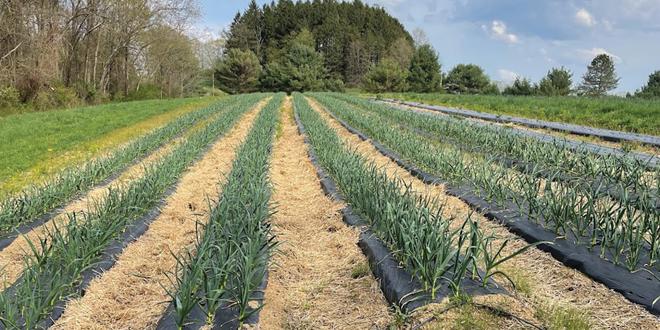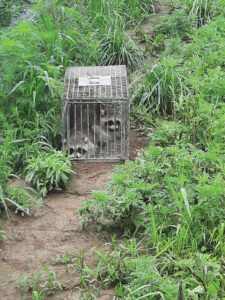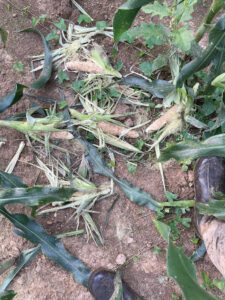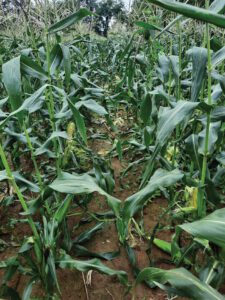
Apr 18, 2024Growers share tips on sparing crops from wildlife
From fences to traps and hot sauce, growers shared tips on how they keep wildlife from eating and damaging their crops at the Mid-Atlantic Fruit and Vegetable Convention.
Throughout a session on wildlife damage control, growers shared photos and anecdotes of deer, groundhogs, raccoons, birds and other animals, and the damage they cause on their farms.

Steve Sample, who grows a variety of vegetables and melons at Sample’s Vegetable Farm in Duncannon, Pennsylvania, constantly experiments with different spacing of wires — some of them electrified — to keep fawns, adult deer and larger rodents from his crops.
Sample is a big believer in documenting and learning about animal behavior with automatic trail cameras that are triggered by movement or programmed to periodically shoot photos.
“Whenever there’s a (fence) breach, we use the cameras to find out where they’re getting in, how they’re getting in, or some way we can adjust the wire or even put another one up,” he said.
Sometimes corn is too tempting and deer will run through the fence. Even so, fences are generally effective if maintained and the wires are set to deter large and small animals.
Sample’s advice to new growers: consider the expense, including labor and upkeep costs, to fence in entire high-value crops where animals are a problem. He also said to be prepared to change plans. He realized planting Austrian winter peas as a cover crop would draw deer away from cash crops, but only as long as the farm kept planting the peas nearby.
“When we finally went in there and killed the (cover crops) and planted the corn, they went after it like — we really had trouble,” Sample said. An audience member suggested using Tabasco Sauce to deter animals.

Sample said he uses Miller Hot Sauce Animal Repellent, but sparingly, because it costs about $280 a gallon. Art King, who grows 160 acres of vegetables on numerous plots north of Pittsburgh at Harvest Valley Farms, powers his polywire electric fences with Parmak solar batteries. He uses push-in posts around the perimeter to string the wire, and sturdier t-posts on the corners.
If you’re using plastic mulch, be prepared to put the fence up immediately after laying the plastic, King said.
“If you leave no fence up there at all after you put the plastic on, there will be holes in the plastic, just so you know,” he said, “because they’re (deer) going to come through there that night, or the next night.”
While onions repel deer, they aren’t bothered until the plants start to bulb, so Harvest Valley Farms installs fences to protect the mulch until the crop advances.
Also on onions: King said rotten onions will keep deer out of a vegetable field. Groundhog trapping is much easier if you know the trail they take. Place a trap on the trail next to the heavy brush, and groundhogs will walk into the trap, even with no bait.
“If you don’t learn anything else at this conference, you learn that,” King said. “And if you have as many groundhogs as we have, we kill right around 50-70 groundhogs a year.”

Jenni Glenister, who grows almost four dozen types of organic vegetables at New Morning Farm in Hustontown, Pennsylvania, said the deer population in the area has risen significantly since 2015. Before, light plastic netting over hoops protected some of the crops.
“We used deterrents, and they worked for about a season, but the challenge with deer is that they learn,” Glenister said. “And so what we’re on to now, and it’s been working better and better over the last five years, is these 3D electric fences, three strands, all electric.”
She also invested in some “deer chasers,” which are basically radios with lights and a motion sensor to startle deer. They’re placed in “those specific spots that you want to have them pay attention and think before they just keep going,” Glenister said. New Morning Farm also uses cover crops, mostly cowpeas in the summer, in areas where Glenister doesn’t mind deer.
— Chris Koger, managing editor
Top photo: Onions repel deer, but not until they start to bulb, said Art King, of Harvest Valley Farms. He said deer won’t eat the onions but will traipse through young onion fields, poking holes in plastic mulch.
















